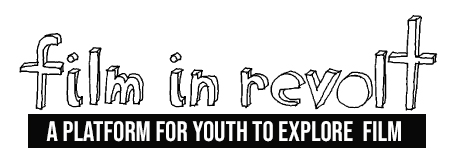After watching the new animated feature The Breadwinner (directed by Nora Twomey) screening at the 2018 Sydney Film Festival, Kena chatted with animation director Lorraine Lordan.
First of all, congratulations on a beautiful and successful piece, I loved it! Can you describe your role on The Breadwinner?
I was the Sequence Animation Director – the sequence being the storyboard sequence. Because there were two different kinds of animation, we ran our pipeline quite differently, as each style had different needs. Ours was quite labour intensive in compositing, and in the real world was quite labour intensive in animation. We had a very small animation team, and we just worked together and tried a lot of things, came upon this style after trying to find the balance between having it too rough or too smooth. We wanted it to be very natural, but at the same time, we didn’t have enough time to make a real paper cut out, although we really wanted to pay homage that.
Lorraine, your animation company has created masterpieces like The Secret of Kells and Song of the Sea, the former of which you’ve worked on, and the latter of which I’ve seen and absolutely adored. These stories are both Irish; what prompted the adaptation of Deborah Ellis’ The Breadwinner which is set in Afghanistan?
I think it was the appeal of the central character. She is so strong-willed and is a hero, but in an unexpected form. For Nora (Director) there was a lot of appeal of showing those everyday heroes and there was a lot that felt similar. The cultures are quite similar: we’re both interested in art, music and storytelling. It was important for Nora that we highlight our similarities, and not our differences.
This material is quite hard-hitting, and unfortunately highly relevant in 2018. How did the significance and perhaps difficult nature of the narrative subject impact the animation?
It definitely impacted it; we put a lot of thought into our stylistic approach, and also how it’s animated. It’s a hard story so we wanted it to be the focus, and we didn’t want the animation to distract from that; that’s how we ended up getting more and more natural, with simple colours, to let the story come out and just be part of the artwork.
There are two distinct worlds in The Breadwinner: Parvana’s world; which isn’t entirely innocent but has a naïve quality to it, and The Rest Of The World; which is brutal and harsh and uncompromising. Throughout the film, these two worlds tragically blur. Did the visual process change at all between animating these two worlds?
It influenced us some ways in terms of lighting and colour, for sure. The family home is central – when the father is there it’s a safe place, comfortable where they can be themselves. It has this comfortable and cosy feeling… But when the Father is taken, the colours are more moody. However, it can still be this hopeful, joyous place through Parvana’s storytelling. It serves as a beacon of hope from the outside world, which is quite difficult, even for men. There are sympathetic male characters who aren’t able to help. There are many people in the story who are struggling and it’s not very easy for anyone. We wanted to highlight that there wasn’t a very strict black and white divide – there’s a lot of grey area, but that’s life.
The dual animation style of this film is simultaneously striking and lovely. The Elephant King fable has a more paper-like quality to it than the main narrative animation. Why is this so? How was the different style for the fable established?
For the Elephant King fable we did a lot of research, tried a lot of things, and I think we struck the right balance. It was important for us to appreciate Afghan visual artwork, the Persian ministers, the beautiful carpets, and to take in the very colourful history and show appreciation for that in the film. The story world was a little bit different because it was to be an escape. We were able to give you a very realistic look on the one hand and let you empathise with the characters, but when things get a bit tough and you need a respite, you’re able to step back into this beautiful, imaginary world, and take a moment to contemplate what’s going on. There’s a lot to process, watching The Breadwinner.
What was your favourite part of the design/animation process?
The beginning. We get to try everything, and you gradually narrow it down, until you find its true form. At the beginning, there’s this sense of ‘we can do aaaanything!’, you know? Everything is possible. It’s a long and slow process, animation. It’s good to be slow and steady, take things step by step, and that definitely appeals to me because I don’t like to be rushed. I like to take my time, sit with things, figure out how I feel about it, and how it makes other people feel. We never make film just for ourselves; we make it for other people to enjoy, too.
Lovely! Thank you so much for your time Lorraine, I look forward to seeing more from Cartoon Saloon.
Interview by Kena Mallender
The Breadwinner
Sydney Film Festival June 6 – June 17 2018
